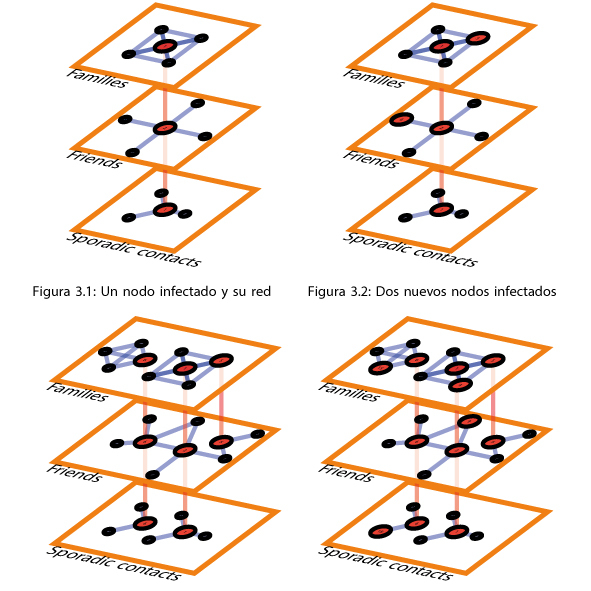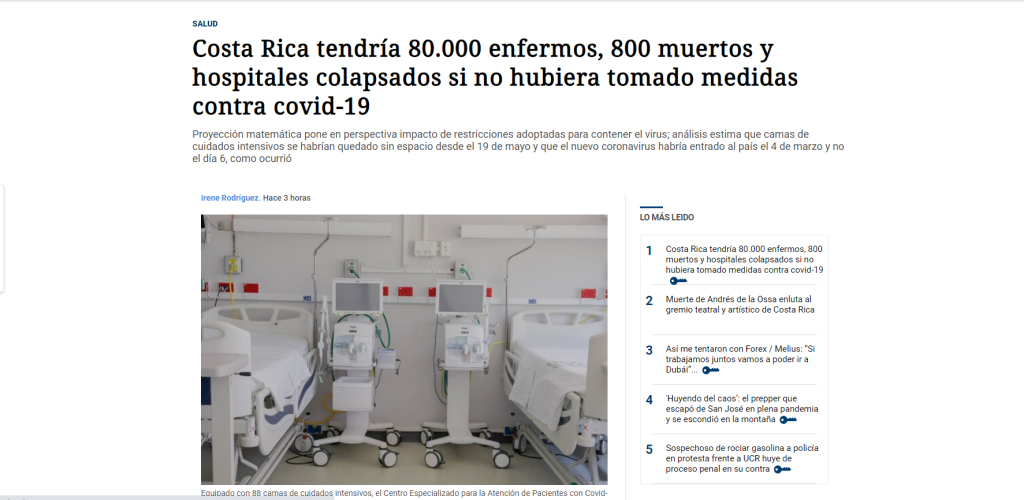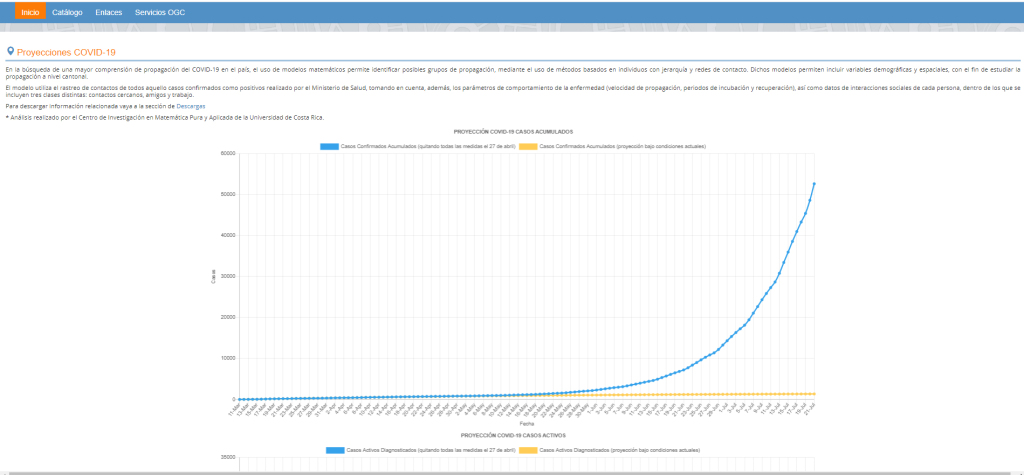
Starting on late December 2019, Chinese health authorities identified a cluster of atypical pneumonia cases in the city of Wuhan, Hubei province. On January 7, 2020, the pathogen responsible was identified as a new strain of coronavirus, now identified as SARS-CoV-2.
By the end of May 2020, the virus had spread to more than 200 countries and affected more than 5 million people, challenging health systems worldwide. This public health crisis has brought together different disciplines to guide the development and implementation of strategies to mitigate the impacts of Covid-19. In this effort, mathematical models have played an important role in guiding public health authorities. Through different techniques, these models help to understand the dynamics of virus transmission, the effect of different control measures, and simulate possible scenarios for the spread of the disease.
Costa Rica reported the first COVID case in the country on March 6. Since then, working groups have been formed with people from different public sectors to confront the pandemic. EpiMEC collaborates with public health entities developing mathematical models used to predict and simulate possible scenarios of COVID-19 spread in the country.
NETWORK MODEL (MODELO DE REDES)
Below you can download the details of the mathematical model developed by the EpiMEC team. The model is currently being used by the Ministry of Health of Costa Rica. The model is in constant review, whenever there are changes in the assumptions or parameters, the corresponding update will be updated and uploaded.
A continuación puede descargar los detalles del modelo matemático desarrollado por el equipo de EpiMEC. El modelo está siendo utilizado actualmente por el Ministerio de Salud de Costa Rica y se ecuentra en constante revisión y actualización.
Starting on late December 2019, Chinese health authorities identified a cluster of atypical pneumonia cases in the city of Wuhan, Hubei province. On January 7, 2020, the pathogen responsible was identified as a new strain of coronavirus, now identified as SARS-CoV-2.
By the end of May 2020, the virus had spread to more than 200 countries and affected more than 5 million people, challenging health systems worldwide. This public health crisis has brought together different disciplines to guide the development and implementation of strategies to mitigate the impacts of Covid-19. In this effort, mathematical models have played an important role in guiding public health authorities. Through different techniques, these models help to understand the dynamics of virus transmission, the effect of different control measures, and simulate possible scenarios for the spread of the disease.
Costa Rica reported the first COVID case in the country on March 6. Since then, working groups have been formed with people from different public sectors to confront the pandemic. EpiMEC collaborates with public health entities developing mathematical models used to predict and simulate possible scenarios of COVID-19 spread in the country.
NETWORK MODEL (MODELO DE REDES)
Below you can download the details of the mathematical model developed by the EpiMEC team. The model is currently being used by the Ministry of Health of Costa Rica. The model is in constant review, whenever there are changes in the assumptions or parameters, the corresponding update will be updated and uploaded.
A continuación puede descargar los detalles del modelo matemático desarrollado por el equipo de EpiMEC. El modelo está siendo utilizado actualmente por el Ministerio de Salud de Costa Rica y se ecuentra en constante revisión y actualización.
Local news outlet:
Radio
July 8, 2020
HABLANDO CLARO
July 7, 2020
7 Días Radio
Costa Rica – reportes Covid 19 – OPS
Octubre 20,2020
Julio 6, 2020













